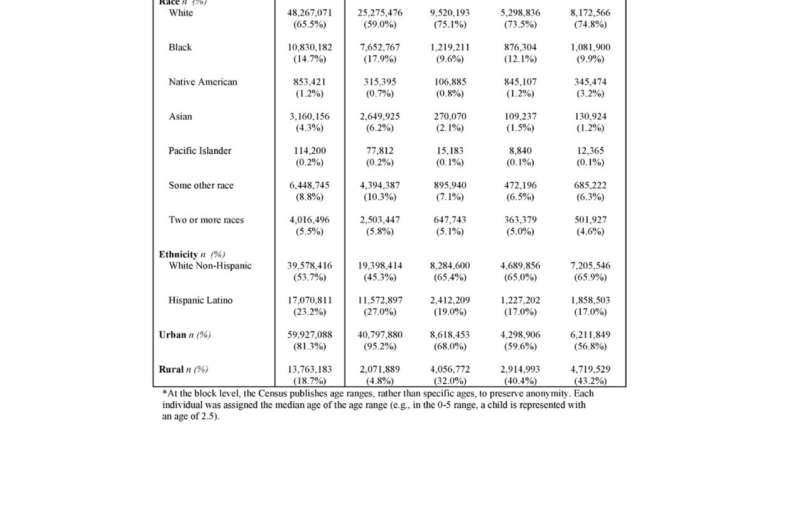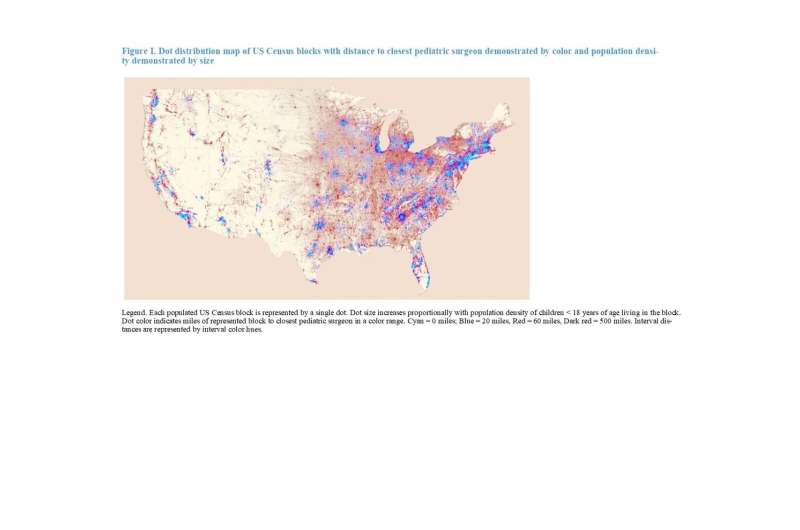Distance to nearest pediatric surgeon a potential barrier for millions of US children

Children who need surgery, statistics show, have fewer complications when it's performed by doctors with specialized pediatric surgical training in regionalized centers where a high a volume of procedures are performed. But in ongoing efforts to develop these regional "centers of excellence," researchers presenting new findings at the American Academy of Pediatrics (AAP) 2018 National Conference & Exhibition suggest, the distances families must travel to access pediatric surgical care should be considered.
The study abstract, "Geographic Distance to Pediatric Surgical Care within the Continental United States," will be presented on Saturday, Nov. 3, at the Orange County Convention Center in Orlando, Fla.
As of the last U.S. Census, more than 10 million children lived more than 60 miles from the nearest pediatric surgeon, according to the abstract authors. Another 7 million children lived more than 40 miles from one.
Longer distances can be a concern for some families, said senior author Capt. Robert Ricca MD, FAAP, Pediatric Surgeon and Director of Surgical Services at the Naval Medical Center in Portsmouth, Va.
"Children and families who live significant distances away may face greater risk for treatment delays, as well as added costs from travel, time away from work, and child care for other children at home," Dr. Ricca said. "With ongoing efforts to build and identify centers of excellence for pediatric surgical care, it is also important to consider the distance-to-care as a potential barrier for access to care."

For their analysis, the researchers used 2010 U.S. Decennial Census and American Pediatric Surgical Association membership data to calculate straight-line distances between pediatric surgeons' ZIP codes and population blocks. They said they hope their findings will provide a framework to use publicly available data from the next census in 2020 to guide appropriate regionalization efforts for subspecialty care based on patient location.
"While not necessarily related to our role as military physicians, our practice in pediatric surgery has led us to develop an interest in the effects of regionalization of health care on the distance patients must travel to receive subspecialty care," said Lt. Christian McEvoy, M.D., M.P.H., an abstract author and Health Analysis Fellow and surgical resident with the Naval Medical Center. "Ensuring equal access to pediatric surgical care for all children is a goal in line with regionalization efforts to ensure care is provided at an appropriate center."
More information: Abstract Title: Geographic Distance to Pediatric Surgical Care within the Continental United States
















